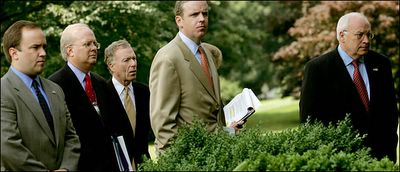Friday, November 05, 2010
MSN
Very complete and in depth coverage of what is happening in the World at Large. Good starting point to disover what is cureent and important.
in reference to: MSN.com (view on Google Sidewiki)Tuesday, October 05, 2010
My Blogs
Sunday, November 27, 2005
Bloglines | My Feeds (6734) (1)
Tuesday, August 09, 2005

Stephanie Keith for The New York Times
"When I go into work, I switch off," Mimi says, adding, "Whatever you want, I'll name the price."
August 7, 2005
Blog and Grind
By PAUL BERGER
"WHEN I go into work I switch off. I feel nothing, I have no opinions. I have no sense of shame, no emotion, everything closed, tucked neatly out of sight. In that way you become a negated space, a void for people to fill in however they desire. I'm Mimi the walking, talking doll, the paint-by-numbers English chick, whatever you want, I'll name the price. I'm the cute, young, private table dancer who makes people laugh and does things men in their forties only wish their first wives had taught them." - Mimi in New York
It's 6 p.m. on a Wednesday in the heart of Midtown. In the dim, subterranean light of a gentlemen's club, Mimi is standing behind the bar, her back to a couple of customers who have just walked in. Resting her elbows on the surface in front of her, she bends forward slowly to reveal a blue neon light in the background that is advertising sushi. To her right, on a T-shaped runway bordered by fairy lights, a semi-naked blonde checks her watch, while the D.J. announces the names of the dancers who will appear next on the bar and the stage.
It's been a slow day at the club, almost as slow as July Fourth. But for Mimi, business is about to pick up.
Mimi Feo, as she calls herself, is a 26-year-old graduate of Cambridge University in England. She arrived in New York in February, hoping to begin a journalism career. The problem was that her six-month visa was for a previous job as a chef on cruise ships, not life as a journalist. Her only literary release now is the caustic Web log Mimi in New York (miminewyork.blogspot.com), a venture that was supposed to chart her rise to journalistic stardom but instead recorded her journey into the very different world of lap dancing.
Mimi is still a writer at heart, but her body is now devoted to the dance. She is dressed in a body-hugging, full-length stripper gown and armed with an acid retort for every smart-aleck remark. She oozes self-confidence, but privately she is becoming desperate. Her visa expires at the end of August. Her readers are waiting to see if she will pack up and leave, and if she does, how long before she is back.
It had all started out so well. In February, Mimi began work as an intern for a travel writer and took a job as a waitress to explore the city's immigrant underbelly. In March and April, two stories of hers were published on the Village Voice Web site: "How to Be an Illegal Alien" and "London Snog." But Mimi could not be paid unless she had a journalist's visa.
All she needed for that, she thought, was a couple of clips from British newspapers and a letter from an editor. But they never came. In May and June two British newspapers, The Guardian and The Times, showed interest and then changed their minds.
Even the job working in a strip club started out with better intentions. Mimi walked in one lunchtime in early May seeking a position as a cocktail waitress in a final attempt to find story ideas. It wasn't until her money ran out that she ditched the drinks tray for six-inch heels and a gown.
"These men are paying for that long-ago teenage time when sex wasn't just a given, when sex was something you didn't know whether you could get or not. They're paying for the tease." - Mimi in New York
Every character in Mimi's Web log, including her own, has a pseudonym. Her workplace, one of the better-known gentlemen's clubs in Manhattan, is populated by characters like Mr. High Ranking U.N. official, Mafia Joe and Bambi. Lately, however, they have been eclipsed by the arrival of Eton, an upper-class Englishman who persuaded the stripper to go on a date. Could Mimi in New York be headed for a "Pretty Woman" ending?
Mimi steps away from the bar and disappears into a corner of the club, away from the flashing A.T.M. She has been working since noon, and her shift finishes at 8. She has earned only $90, but in the next 90 minutes she will make an additional $410. The place is starting to fill up. About half of the 20 young women are otherwise engaged in the Champagne Room, a dim, closet-size space that holds half a dozen couples. That leaves only a handful of girls on the club's main floor, and Mimi is in great demand.
In one sense, Mimi achieved a small part of her goal with her employment at the club; strippers, like writers, are treated as freelancers. Dancers pay what is called a house fee to work the floor: $75 during the day and $150 at night. On top of that, they pay a $20 tip to the D.J. and $20 to the house mom (who provides baby oil, bandages and a needle and thread at all times). After that not inconsiderable outlay, everything a dancer earns is profit. On a slow day it may be $200, on an average day nearer $500 or $600, and on a good day $700 or more. Mimi says she earns $2,000 to $3,000 in a four-day week. But these sums are not predicated on giving random men $20 lap dances.
"The way of making money is to build up a relationship with a client, to get the guys to fall in love with you and keep them coming back," Mimi says. "You draw them in by pretending that they know something about you. Guys always want to know your real name. As soon as they think they know that, you start reeling them in. They want a fantasy, but at the same time they want some intimacy. And they want to believe it's real."
"Nothing could induce me to ever give up my dream of being a writer. And the longer I work in a seedy, sweaty world where sex is the currency and my body a hundred dollar bill, the more I know that writing isn't just an escape. It's what I will do for the rest of my life. And this is just a means to make that happen." - Mimi in New York
MANY of the clients who frequent the club are people Mimi would rather not meet, let alone flirt with. There's the 80-year-old who shows up every Saturday, buys a single black currant cordial and watches the women all day. "A lot of the guys are really weird," Mimi says. "They are very rich, very successful, but they turn out to be perverts."
Some regulars can be seen greeting dancers like friends, a harmless kiss on the cheek, a lazy hand brushing a back or shoulder. For $370, they can take their companion to the Champagne Room, where they are rewarded with one hour's undivided attention and the chance to brush against more than just a back or a shoulder.
At the top of the client pecking order are men who pay $1,500 for one hour away from prying eyes in the Blue Room, the only space not monitored by closed-circuit television. Mimi alludes to the fact that although no touching should ever take place, some clients' particular desires can be satiated and a blind eye turned.
And in terms of women, whatever a client could want, the club has: African-American, Asian, Brazilian and East European, short, tall, slim, curvy, natural and enhanced - 200 freelancers in their 20's and 30's, most of them documented workers: single mothers, students, girls who somehow fell into dancing and forgot to get out.
"No one thinks they are going to become a stripper," Mimi says. "It's just someone you know, or chance, that leads you there."
She adds: "There are so many good days when you party and have nice clients and it's fun. And then there are other days when you are dancing for some awful guy behaving like a kid in a candy store. It's very rare that you can find people that ever appreciate you for who you are."
Paul Berger is a contributing editor of "Blog! How the Newest Media Revolution Is Changing Politics, Business, and Culture," to be published in the fall.
Copyright 2005 The New York Times Company Home Privacy Policy Search Corrections XML Help Contact Us Work for Us Back to Top

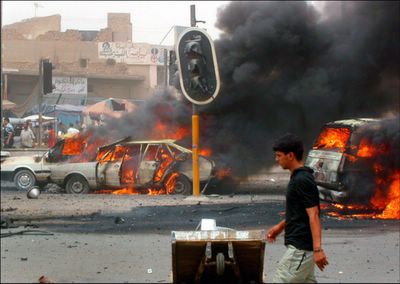
Reuters
An Iraqi walking through the aftermath of a suicide bombing in Baghdad that killed seven people and wounded at least 90
August 9, 2005
A Violent Day in Baghdad Kills More Than 20
By THE ASSOCIATED PRESS
Filed at 6:20 p.m. ET
BAGHDAD, Iraq (AP) -- A suicide car bomber struck a U.S. convoy waiting at an intersection Tuesday in Baghdad, killing seven people -- including one American soldier -- and wounding more than 90. More than a dozen others died in scattered attacks across the capital.
Also, a U.S. Marine assigned to the 2nd Marine Division was killed Monday by small-arms fire in Ramadi, 70 miles west of Baghdad, the U.S. military said. The deaths brought the number of U.S. service members killed in Iraq this month to at least 32.
Violence raged as Iraqi political leaders showed little sign of compromise less than a week before a deadline for approving a new constitution. Faction leaders conferred for about four hours Tuesday night hoping to overcome their differences and produce a charter by Monday.
Participants said the talks focused on Kurdish demands for a federal state and although some progress was made, there was no final agreement on the issue. More talks were set for Wednesday.
The American convoy was stopped at a busy intersection when a driver detonated a vehicle packed with explosives, the U.S. Army said. Six Iraqi civilians also were killed; scores of Iraqis and two U.S. soldiers were wounded.
At least 1,836 members of the U.S. military have died since the Iraq war started in March 2003, according to an Associated Press count.
The United States hopes progress on the political front, including adoption of a democratic constitution, will help deflate the Sunni Arab-led rebellion and enable the Americans and their partners to begin withdrawing troops next year.
''It's important that they stay with their timetable'' on the constitution, Defense Secretary Donald H. Rumsfeld said Tuesday. ''This will be a critical step in persuading the majority of the Iraqis that the new Iraq is worth fighting for, that they have a stake in it.''
Rumsfeld told Pentagon reporters that the constitution ''could well turn out to be one of the most powerful weapons to be deployed against the terrorists'' and the insurgents are ''determined to stop the constitutional process through terror and intimidation.''
Late Tuesday, representatives of political factions met for a second round of talks aimed at breaking the deadlock over the constitution, which the parliament must approve by Aug. 15. Talks were postponed Monday by a severe sandstorm.
The constitution also needs approval from voters in an Oct. 15 referendum. Passage would lead to elections in mid-December.
At the beginning of the meeting, presidential spokesman Kamran Qaradaghi told reporters the latest talks would focus on federalism, distribution of wealth and the elections law.
Kurds demand that Iraq be transformed into a federal state so they can continue to run their autonomous mini-state in the north. Sunni Arabs oppose federalism because they fear the Kurds want to secede and dismember Iraq.
Kurdish leader Massoud Barzani joined the talks Tuesday. Barzani, who was stranded in northern Iraq by the sandstorms, has vowed not to compromise on federalism.
A prominent Sunni Arab on the constitutional committee, Saleh al-Mutlaq, suggested that federalism be decided by the parliament to be elected in December.
''We will not accept federalism in these circumstances,'' al-Mutlaq told The Associated Press. He warned that if Kurdish demands are accepted, ''they will have grave consequences'' for the future of Iraq. He did not elaborate.
Kurdish parliament member Mahmoud Othman said that during the meeting, U.S. Ambassador Zalmay Khalilzad repeatedly called President Jalal Talabani and parliament speaker Hajim al-Hassani for updates -- a sign of U.S. pressure for a deal.
''The problem is that they started discussing the most difficult issue,'' Othman said, referring to federalism.
Iraqi Prime Minister Ibrahim al-Jaafari, a Shiite, hinted that political leaders might not resolve all issues before next week's deadline but said he remained hopeful the draft could be completed by then.
''But if some matters block us ... then it might take a little time'' after the Monday deadline, he told AP.
Al-Jaafari said Iraqi leaders have struggled against deadlines before -- including forming a new government after January elections -- and were able to meet them.
Asked if leaders would succeed this time, he said: ''We hope so, God willing. I see that most of the groups have a strong will, and, God willing, we will cooperate to finish it.''
In other developments:
--U.S. troops Tuesday killed four insurgents trying to plant a roadside bomb in the city of Ramadi, police Lt. Mohammed al-Obeidi said.
--Violence targeting Iraqi police left 10 officers dead, including five policemen slain while sleeping in their car. Lt. Col. Ahmed Aboud said the men had spent the night on patrol and were waiting for replacements.
--Late Tuesday, gunmen killed an Iraqi Cabinet employee, Abbas Ibrahim Mohammed, in Baghdad. In addition, three civilians were killed in a mortar attack, police said.
--U.S. and Iraqi forces killed two insurgents and arrested 22 others in northern Iraq, the U.S. military said Tuesday. Soldiers from the U.S. Army's 3rd Battalion, 21st Infantry Regiment killed the insurgents, found setting up a mortar tube Monday in Mosul.
--The mayor of Baghdad, Alaa al-Timimi, was fired and responsibility for managing the city transferred to the provincial governor, government spokesman Laith Kubba said. He refused to say why the provincial council sacked the mayor.
--The mayor of Samawah, a southern Shiite city gripped by riots over lack of municipal services, resigned under pressure. The decision came Monday during a visit by delegates sent by the prime minister, according to Sheik Mohannad al-Gharrawi.
About 750 Japanese troops are based in Samawah, 230 miles southeast of Baghdad.
Associated Press writers Qassim Abdul-Zahra, Omar Sinan and Sinan Salaheddin contributed to this report.
Copyright 2005 The Associated Press Home Privacy Policy Search Corrections XML Help Contact Us Work for Us Back to Top


August 9, 2005
Four in 9/11 Plot Are Called Tied to Qaeda in '00
By DOUGLAS JEHL
WASHINGTON, Aug. 8 -
More than a year before the Sept. 11 attacks, a small, highly classified military intelligence unit identified Mohammed Atta and three other future hijackers as likely members of a cell of Al Qaeda operating in the United States, according to a former defense intelligence official and a Republican member of Congress.
In the summer of 2000, the military team, known as Able Danger, prepared a chart that included visa photographs of the four men and recommended to the military's Special Operations Command that the information be shared with the Federal Bureau of Investigation, the congressman, Representative Curt Weldon of Pennsylvania, and the former intelligence official said Monday.
The recommendation was rejected and the information was not shared, they said, apparently at least in part because Mr. Atta, and the others were in the United States on valid entry visas. Under American law, United States citizens and green-card holders may not be singled out in intelligence-collection operations by the military or intelligence agencies. That protection does not extend to visa holders, but Mr. Weldon and the former intelligence official said it might have reinforced a sense of discomfort common before Sept. 11 about sharing intelligence information with a law enforcement agency.
A former spokesman for the Sept. 11 commission, Al Felzenberg, confirmed that members of its staff, including Philip Zelikow, the executive director, were told about the program on an overseas trip in October 2003 that included stops in Afghanistan and Pakistan. But Mr. Felzenberg said the briefers did not mention Mr. Atta's name.
The report produced by the commission last year does not mention the episode.
Mr. Weldon first spoke publicly about the episode in June, in a little-noticed speech on the House floor and in an interview with The Times-Herald in Norristown, Pa. The matter resurfaced on Monday in a report by GSN: Government Security News, which is published every two weeks and covers domestic-security issues. The GSN report was based on accounts provided by Mr. Weldon and the same former intelligence official, who was interviewed on Monday by The New York Times in Mr. Weldon's office.
In a telephone interview from his home in Pennsylvania, Mr. Weldon said he was basing his assertions on similar ones by at least three other former intelligence officers with direct knowledge of the project, and said that some had first called the episode to his attention shortly after the attacks of Sept. 11, 2001.
The account is the first assertion that Mr. Atta, an Egyptian who became the lead hijacker in the plot, was identified by any American government agency as a potential threat before the Sept. 11 attacks. Among the 19 hijackers, only Khalid al-Mihdhar and Nawaf al-Hazmi had been identified as potential threats by the Central Intelligence Agency before the summer of 2000, and information about them was not provided to the F.B.I. until the spring of 2001.
Mr. Weldon has long been a champion of the kind of data-mining analysis that was the basis for the work of the Able Danger team.
The former intelligence official spoke on the condition of anonymity, saying he did not want to jeopardize political support and the possible financing for future data-mining operations by speaking publicly. He said the team had been established by the Special Operations Command in 1999, under a classified directive issued by Gen. Hugh Shelton, then the chairman of the Joint Chiefs of Staff, to assemble information about Al Qaeda networks around the world.
"Ultimately, Able Danger was going to give decision makers options for taking out Al Qaeda targets," the former defense intelligence official said.
He said that he delivered the chart in summer 2000 to the Special Operations Command headquarters in Tampa, Fla., and said that it had been based on information from unclassified sources and government records, including those of the Immigration and Naturalization Service.
"We knew these were bad guys, and we wanted to do something about them," the former intelligence official said.
The unit, which relied heavily on data-mining techniques, was modeled after those first established by Army intelligence at the Land Information Warfare Assessment Center, now known as the Information Dominance Center, at Fort Belvoir, Va., the official said.
Mr. Weldon is an outspoken figure who is a vice chairman of both the House Armed Services Committee and the House Homeland Security Committee. He said he had recognized the significance of the episode only recently, when he contacted members of the military intelligence team as part of research for his book, "Countdown to Terror: The Top-Secret Information That Could Prevent the Next Terrorist Attack on America and How the C.I.A. Has Ignored It."
Mr. Weldon's book prompted one veteran C.I.A. case officer to strongly dispute the reliability of one Iranian source cited in the book, saying the Iranian "was a waste of my time and resources."
Mr. Weldon said that he had discussed the Able Danger episode with Representative Peter Hoekstra, the Michigan Republican who is chairman of the House Intelligence Committee, and that at least two Congressional committees were looking into the episode.
In the interview on Monday, Mr. Weldon said he had been aware of the episode since shortly after the Sept. 11 attack, when members of the team first brought it to his attention. He said he had told Stephen J. Hadley, then the deputy national security adviser, about it in a conversation in September or October 2001, and had been surprised when the Sept. 11 commission report made no mention of the operation.
Col. Samuel Taylor, a spokesman for the military's Special Operations Command, said no one at the command now had any knowledge of the Able Danger program, its mission or its findings. If the program existed, Colonel Taylor said, it was probably a highly classified "special access program" on which only a few military personnel would have been briefed.
During the interview in Mr. Weldon's office, the former defense intelligence official showed a floor-sized chart depicting Al Qaeda networks around the world that he said was a larger, more detailed version similar to the one prepared by the Able Danger team in the summer of 2000.
He said the original chart, like the new one, had included the names and photographs of Mr. Atta and Marwan al-Shehhi, as well as Mr. Mihdhar and Mr. Hazmi, who were identified as members of what was described as an American-based "Brooklyn" cell, as one of five such Al Qaeda cells around the world.
The official said the link to Brooklyn was meant as a term of art rather than to be interpreted literally, saying that the unit had produced no firm evidence linking the men to the borough of New York City but that a computer analysis seeking to establish patterns in links between the four men had found that "the software put them all together in Brooklyn."
According to the commission report, Mr. Mihdhar and Mr. Hazmi were first identified in late 1999 or 2000 by the C.I.A. as Qaeda members who might be involved in a terrorist operation. They were tracked from Yemen to Malaysia before their trail was lost in Thailand. Neither man was put on a State Department watch list before they flew to Los Angeles in early 2000. The F.B.I. was not warned about them until the spring of 2001, and no efforts to track them were made until August 2001.
Neither Mr. Shehhi nor Mr. Atta was identified by the American intelligence agencies as a potential threat, the commission report said. Mr. Shehhi arrived in Newark on a flight from Brussels on May 29, 2000, and Mr. Atta arrived in Newark from Prague on June 3 that year.
The former intelligence official said the first Able Danger report identified all four men as members of a "Brooklyn" cell, and was produced within two months after Mr. Atta arrived in the United States. The former intelligence official said he was among a group that briefed Mr. Zelikow and at least three other members of the Sept. 11 commission staff about Able Danger when they visited the Afghanistan-Pakistan region in October 2003.
The official said he had explicitly mentioned Mr. Atta as a member of a Qaeda cell in the United States. He said the staff encouraged him to call the commission when he returned to Washington at the end of the year. When he did so, the ex-official said, the calls were not returned.
Mr. Felzenberg, the former Sept. 11 commission spokesman, said on Monday that he had talked with some of the former staff members who participated in the briefing.
"They all say that they were not told anything about a Brooklyn cell," Mr. Felzenberg said. "They were told about the Pentagon operation. They were not told about the Brooklyn cell. They said that if the briefers had mentioned anything that startling, it would have gotten their attention."
As a result of the briefing, he said, the commission staff filed document requests with the Pentagon for information about the program. The Pentagon complied, he said, adding that the staff had not hidden anything from the commissioners.
"The commissioners were certainly told of the document requests and what the findings were," Mr. Felzenberg said.
Philip Shenon and Eric Schmitt contributed reporting for this article.
Copyright 2005 The New York Times Company Home Privacy Policy Search Corrections XML Help Contact Us Work for Us Back to Top

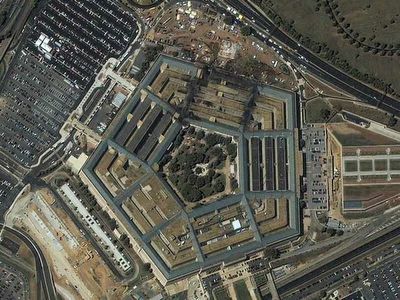
The Pentagon
War Plans Drafted To Counter Terror Attacks in U.S.
Domestic Effort Is Big Shift for Military
By Bradley Graham
Washington Post Staff Writer
Monday, August 8, 2005; A01
COLORADO SPRINGS -- The U.S. military has devised its first-ever war plans for guarding against and responding to terrorist attacks in the United States, envisioning 15 potential crisis scenarios and anticipating several simultaneous strikes around the country, according to officers who drafted the plans.
The classified plans, developed here at Northern Command headquarters, outline a variety of possible roles for quick-reaction forces estimated at as many as 3,000 ground troops per attack, a number that could easily grow depending on the extent of the damage and the abilities of civilian response teams.
The possible scenarios range from "low end," relatively modest crowd-control missions to "high-end," full-scale disaster management after catastrophic attacks such as the release of a deadly biological agent or the explosion of a radiological device, several officers said.
Some of the worst-case scenarios involve three attacks at the same time, in keeping with a Pentagon directive earlier this year ordering Northcom, as the command is called, to plan for multiple simultaneous attacks.
The war plans represent a historic shift for the Pentagon, which has been reluctant to become involved in domestic operations and is legally constrained from engaging in law enforcement. Indeed, defense officials continue to stress that they intend for the troops to play largely a supporting role in homeland emergencies, bolstering police, firefighters and other civilian response groups.
But the new plans provide for what several senior officers acknowledged is the likelihood that the military will have to take charge in some situations, especially when dealing with mass-casualty attacks that could quickly overwhelm civilian resources.
"In my estimation, [in the event of] a biological, a chemical or nuclear attack in any of the 50 states, the Department of Defense is best positioned -- of the various eight federal agencies that would be involved -- to take the lead," said Adm. Timothy J. Keating, the head of Northcom, which coordinates military involvement in homeland security operations.
The plans present the Pentagon with a clearer idea of the kinds and numbers of troops and the training that may be required to build a more credible homeland defense force. They come at a time when senior Pentagon officials are engaged in an internal, year-long review of force levels and weapons systems, attempting to balance the heightened requirements of homeland defense against the heavy demands of overseas deployments in Iraq, Afghanistan and elsewhere.
Keating expressed confidence that existing military assets are sufficient to meet homeland security needs. Maj. Gen. Richard J. Rowe, Northcom's chief operations officer, agreed, but he added that "stress points" in some military capabilities probably would result if troops were called on to deal with multiple homeland attacks.
Debate and Analysis
Several people on the staff here and at the Pentagon said in interviews that the debate and analysis within the U.S. government regarding the extent of the homeland threat and the resources necessary to guard against it remain far from resolved.
The command's plans consist of two main documents. One, designated CONPLAN 2002 and consisting of more than 1,000 pages, is said to be a sort of umbrella document that draws together previously issued orders for homeland missions and covers air, sea and land operations. It addresses not only post-attack responses but also prevention and deterrence actions aimed at intercepting threats before they reach the United States.
The other, identified as CONPLAN 0500, deals specifically with managing the consequences of attacks represented by the 15 scenarios.
CONPLAN 2002 has passed a review by the Pentagon's Joint Staff and is due to go soon to Defense Secretary Donald H. Rumsfeld and top aides for further study and approval, the officers said. CONPLAN 0500 is still undergoing final drafting here. (CONPLAN stands for "concept plan" and tends to be an abbreviated version of an OPLAN, or "operations plan," which specifies forces and timelines for movement into a combat zone.)
The plans, like much else about Northcom, mark a new venture by a U.S. military establishment still trying to find its comfort level with the idea of a greater homeland defense role after the Sept. 11, 2001, attacks.
Military officers and civilian Pentagon policymakers say they recognize, on one hand, that the armed forces have much to offer not only in numbers of troops but also in experience managing crises and responding to emergencies. On the other hand, they worry that too much involvement in homeland missions would diminish the military's ability to deal with threats abroad.
The Pentagon's new homeland defense strategy, issued in June, emphasized in boldface type that "domestic security is primarily a civilian law enforcement function." Still, it noted the possibility that ground troops might be sent into action on U.S. soil to counter security threats and deal with major emergencies.
"For the Pentagon to acknowledge that it would have to respond to catastrophic attack and needs a plan was a big step," said James Carafano, who follows homeland security issues for the Heritage Foundation, a conservative Washington think tank.
William M. Arkin, a defense specialist who has reported on Northcom's war planning, said the evolution of the Pentagon's thinking reflects the recognition of an obvious gap in civilian resources.
Since Northcom's inception in October 2002, its headquarters staff has grown to about 640 members, making it larger than the Southern Command, which oversees operations in Latin America, but smaller than the regional commands for Europe, the Middle East and the Pacific. A brief tour late last month of Northcom's operations center at Peterson Air Force Base found officers monitoring not only aircraft and ship traffic around the United States but also the Discovery space shuttle mission, the National Scout Jamboree in Virginia, several border surveillance operations and a few forest firefighting efforts.
'Dual-Use' Approach
Pentagon authorities have rejected the idea of creating large standing units dedicated to homeland missions. Instead, they favor a "dual-use" approach, drawing on a common pool of troops trained both for homeland and overseas assignments.
Particular reliance is being placed on the National Guard, which is expanding a network of 22-member civil support teams to all states and forming about a dozen 120-member regional response units. Congress last year also gave the Guard expanded authority under Title 32 of the U.S. Code to perform such homeland missions as securing power plants and other critical facilities.
But the Northcom commander can quickly call on active-duty forces as well. On top of previous powers to send fighter jets into the air, Keating earlier this year gained the authority to dispatch Navy and Coast Guard ships to deal with suspected threats off U.S. coasts. He also has immediate access to four active-duty Army battalions based around the country, officers here said.
Nonetheless, when it comes to ground forces possibly taking a lead role in homeland operations, senior Northcom officers remain reluctant to discuss specifics. Keating said such situations, if they arise, probably would be temporary, with lead responsibility passing back to civilian authorities.
Military exercises code-named Vital Archer, which involve troops in lead roles, are shrouded in secrecy. By contrast, other homeland exercises featuring troops in supporting roles are widely publicized.
Legal Questions
Civil liberties groups have warned that the military's expanded involvement in homeland defense could bump up against the Posse Comitatus Act of 1878, which restricts the use of troops in domestic law enforcement. But Pentagon authorities have told Congress they see no need to change the law.
According to military lawyers here, the dispatch of ground troops would most likely be justified on the basis of the president's authority under Article 2 of the Constitution to serve as commander in chief and protect the nation. The Posse Comitatus Act exempts actions authorized by the Constitution.
"That would be the place we would start from" in making the legal case, said Col. John Gereski, a senior Northcom lawyer.
But Gereski also said he knew of no court test of this legal argument, and Keating left the door open to seeking an amendment of the Posse Comitatus Act.
One potentially tricky area, the admiral said, involves National Guard officers who are put in command of task forces that include active-duty as well as Guard units -- an approach first used last year at the Group of Eight summit in Georgia. Guard troops, acting under state control, are exempt from Posse Comitatus prohibitions.
"It could be a challenge for the commander who's a Guardsman, if we end up in a fairly complex, dynamic scenario," Keating said. He cited a potential situation in which Guard units might begin rounding up people while regular forces could not.
The command's sensitivity to legal issues, Gereski said, is reflected in the unusually large number of lawyers on staff here -- 14 compared with 10 or fewer at other commands. One lawyer serves full time at the command's Combined Intelligence and Fusion Center, which joins military analysts with law enforcement and counterintelligence specialists from such civilian agencies as the FBI, the CIA and the Secret Service.
A senior supervisor at the facility said the staff there does no intelligence collection, only analysis.
He also said the military operates under long-standing rules intended to protect civilian liberties. The rules, for instance, block military access to intelligence information on political dissent or purely criminal activity.
Even so, the center's lawyer is called on periodically to rule on the appropriateness of some kinds of information-sharing. Asked how frequently such cases arise, the supervisor recalled two in the previous 10 days, but he declined to provide specifics.
� 2005 The Washington Post Company

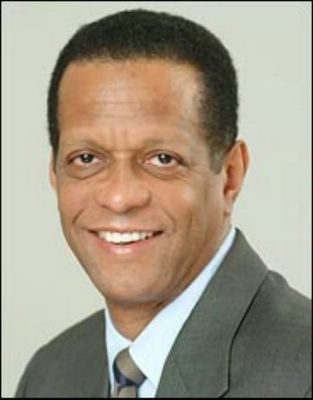
Columnist Biography: Bob Herbert
Bob Herbert joined The New York Times as an Op-Ed columnist in 1993. His twice a week column comments on politics, urban affairs and social trends.
Prior to joining The Times, Mr. Herbert was a national correspondent for NBC from 1991 to 1993, reporting regularly on "The Today Show" and "NBC Nightly News." He had worked as a reporter and editor at The Daily News from 1976 until 1985, when he became a columnist and member of its editorial board.
In 1990, Mr. Herbert was a founding panelist of "Sunday Edition," a weekly discussion program on WCBS-TV in New York, and the host of Hotline, a weekly issues program on New York public television.
He began his career as a reporter with The Star-Ledger in Newark, N.J., in 1970. He became its night city editor in 1973.
Mr. Herbert has won numerous awards, including the Meyer Berger Award for coverage of New York City and the American Society of Newspaper Editors award for distinguished newspaper writing. He was chairman of the Pulitzer Prize jury for spot news reporting in 1993.
Born in Brooklyn on March 7, 1945, Mr. Herbert received a B.S. degree in journalism from the State University of New York (Empire State College) in 1988. He has taught journalism at Brooklyn College and the Columbia University Graduate School of Journalism. He lives in Manhattan on the Upper West Side.
The Pain Deep Inside
By BOB HERBERT
Washington
Specialist Craig Peter Olander Jr. has the look of a mischievous kid, except that his eyes sometimes telegraph that they've seen too much. And there's a weariness that tends to slip into his voice that seems unusual for someone just 21 years old. Killing can do that to a person.
Specialist Olander was a teenager from Waynesburg, Ohio, population 1,000, when he joined the Army in 2003. "It was very appealing," he said. "The benefits. College. And it was something I'd always wanted to do since I was a small boy - be in the Army."
He had mixed feelings about going to Iraq, but he wasn't particularly upset. He didn't dwell on the possibility of getting killed or wounded. And he gave no thought at all to the spiritual or psychological toll that combat can take. "I was very confident in my training and I was very religious," he said. "I'd always read Bible stories as a child and I believed the Lord would look over me and his will would be done."
He went to Iraq in early 2004 and quickly learned that nothing - not his military training, not the Bible, nothing - had adequately prepared him for the experience. By the time he returned several months later, he said, the trauma he had encountered in Iraq had reached deep inside him. There was both fear and the hint of a plea in his voice as he told me, with surprising candor, that he believed the things he'd had to do in Iraq might jeopardize the salvation of his soul.
"Our base was Camp Victory in Baghdad," he said. "We did raids, convoys, security, patrols - numerous, numerous things."
The first time he was wounded was in the spring. He suffered a severe concussion and a sprained back when insurgents attacked his convoy with an antitank weapon. The headaches that ensued were all but unbearable. He was wounded again the following August.
"I was driving the Humvee that day," he said. "The usual driver wasn't sure of the area, so we switched. He was a new fellow and he was up on the gun."
When insurgents attacked the unit with rocket-propelled grenades, Specialist Olander tried to maneuver the Humvee to safety. As he was turning, an explosion sent the vehicle into a roll.
"I stayed conscious," he said. "As soon as the vehicle stopped rolling, I hopped out and I heard my sergeant hollering on the radio that we were hit. So I knew he was O.K. So I immediately went to the gunner, who was pinned under the Humvee. He was still alive at that point but he lost consciousness very quickly because the weight had stopped him from being able to breathe.
"We jacked the vehicle up. And right around that time, I'd say, once we got the vehicle off of him, unfortunately, he passed away."
Specialist Olander said he reached for a machine gun as the insurgents continued to fire with rocket-propelled grenades and small arms. "We engaged numerous individuals and killed them," he said.
When I asked if he knew how many insurgents he personally had killed, he said, "Three, for sure."
Specialist Olander sustained a number of injuries, including another concussion. "And my face was messed up pretty good," he said. But his major problems then and now, as he readily acknowledges, "are emotional and psychological."
He is filled with guilt. Several of his friends have been killed, and he thinks he could have done something to save the gunner who died. "I felt it may have been my fault that it happened," he said. "Maybe I could have handled the situation differently."
He is also filled with turbulent emotions related to the insurgents that he killed. "I had no hesitation about pulling the trigger," he said. "But the aftermath is what hurt. Before I joined the military, I valued life very much, so taking it was hard. It's confusing trying to figure it out, you know, because sometimes I feel rage toward them.
"But then it becomes a very religious thing, because I wonder, you know, since I've taken these lives, if I'm going to be accepted into heaven. You know, have I done the right thing?"
Specialist Olander is being treated for depression and post-traumatic stress disorder at the Walter Reed Army Medical Center here. He expects to head back to Waynesburg in a few weeks, where he'll stay for a while in a trailer that sits in a campground "out in the middle of nowhere."
E-mail: bobherb@nytimes.com
Copyright 2005 The New York Times Company Home Privacy Policy Search Corrections XML Help Contact Us Work for Us Back to Top


Phil Mansfield for The New York Times
Camilla Bradley, the owner and designer behind the CK Bradley fashion company, in her three-room log cabin, just down the road from her father's lodge


Phil Mansfield for The New York Times
Camilla Bradey's cabin is part of the Awosting Reserve, nearly 3,000 acres ofwoodland, galcial lakes and waterfalls owned by her father on the Shawangunk Ridge.
A Fashion Designer And Her Log Cabin
By PENELOPE GREEN
GROWING up here," said Camilla Bradley, the 29-year-old preppy wardrober, "I rejected all this. I wanted to live in a normal house, with a normal family, with wall-to-wall carpeting and wallpaper."
Ms. Bradley was stretched out leggily on the deck of her three-room log cabin one hot, still afternoon not too long ago, a worn straw hat mashed down low over her eyes. Spread about her was "all this": nearly 3,000 acres of woodland, glacial lakes and waterfalls on the Shawangunk Ridge, the gnarled, vertiginous fingers of which straddle the towns of Gardiner and Shawangunk, N.Y., and make its owner, John Atwater Bradley - Ms. Bradley's father - one of Ulster County's largest landowners. Mr. Bradley, a management consultant, has named his holdings the Awosting Reserve (Awosting means "pure water" in the Algonquin Indian language, Ms. Bradley said).
Ms. Bradley is the owner and designer behind CK Bradley, a four-and-a-half-year-old company that outfits young fogies from Newport, R.I., to Palm Beach, Fla., in ribbon belts and pink satin strapless dresses (its Manhattan store is on East 74th Street).
Such costumes seem to envision a world where nature is just a pretty view neatly framed by a bright green swath of well-mown turf and the pink canvas flaps of a party tent, not this raw, fly-blown spot where a pair of Jack Rogers sandals would be about as much use as a racing bicycle. Ms. Bradley, in fact, was not wearing the iconic WASP flip-flops her customers favor, but a pair of orange and blue Skechers.
Mr. Bradley lives up the shale-strewn dirt road from his daughter, in a former Girl Scout lodge with a parrot named Thisbe, a stuffed black bear and, lately, a mannequin dressed in 1890's fashions he's named Vicky.
A loquacious and charming former Eagle Scout who first hiked into these woods in the late 1940's, Mr. Bradley is a polarizing character up here. His plans to develop the ridge into luxury estate parcels to finance a nature center has some neighbors up in arms.
On either side of the approach to the Bradley compound - which includes eight tiny cabins left over from the Girl Scouts, a log house Mr. Bradley has given to Jim Fowler, the host of the 60's-era nature program "Wild Kingdom," and a computer-sawn log dwelling called the Shire - march a small battalion of red-on-white "Save the Ridge" signs.
Part Teddy Roosevelt, part Uncle Matthew - the eccentric Nancy Mitford character - Mr. Bradley rules this ridge like a feudal lord. ("Type my name into your computer," he exhorted a visitor. "You'll see some hot stuff come up." He was right.) He has raised his daughter all by himself since his wife and their two young sons were killed by a drunk driver in 1978.
Ms. Bradley was just 2 that year, and as she grew up, her weekends and summers spent in her father's lodge, he taught her to fish and build a fire, to clear a stream and use a chainsaw. (Winters were spent in New York City, where the two still share an apartment.)
She moved from bedroom to bedroom - there are six in the lodge, which was built in 1884 and used by the Girl Scouts in the 1940's and 50's - from the old bunk room, with its six bunks stacked three on three where her brothers had slept, to her mother's room on the corner, with its roughly hewn log bed. Inside were photographs of her mother, Marilyn Bradley, a British fashion model - taut and lovely black and white images that now mirror Ms. Bradley's face.
"Every couple of years I'd graduate to a new room," said Ms. Bradley, who would hot-glue fabric and ric rac over unpainted log walls, the "wallpaper" she'd longed for. Her mother, a craftswoman of mind-boggling volume, made every napkin, pillow case and quilt, every plate and tile, even all the mattress covers. Mrs. Bradley had filled a garage down the road with bolts of fabric, canvas for oil painting or needlepoint, colored wools, tubes of paint, fabric trimmings - an endless prop closet.
"When I was a kid," Ms. Bradley said, "if I wanted to paint, there were rolls of canvas and tubes of oils. If I wanted to needlepoint or hook a rug, there was canvas and wool for that too."
Her mother's fabrics and clothes, which "Camilla poo-poo'd at first but then began to modify and wear herself," Mr. Bradley said, made a kind of interactive scrapbook from which Ms. Bradley could "learn" her mother. Further, all that hot-gluing and sewing seeded what would become a business.
At Trinity College in Hartford, Ms. Bradley made ribbon belts and sold them on the lawns, presaging even high fashion's recent dalliance with preppy style.
When she was 25, sewing samples on her father's ancient dining room table, he gave her La Casita, the little three-room cabin just yards from the lodge, for her own. A simple wood-frame dwelling that Mr. Bradley sheathed in logs (he has his own saw mill here), it had been the Girl Scouts' infirmary, and then a craft house.
"It became Camilla's," Mr. Bradley said, "when she was old enough to appreciate it."
She filled the space with pickings from the lodge - an old cane couch, a door she covered with her mother's fabric and used as a headboard, her favorite books (yards and yards of Nancy Drew and the Hardy Boys) - and two decades worth of Playboy magazines, the golden years of the 1950's and 60's, a gift from her father. He'd bought them at a local auction, she said, where he is such a fixture he's got two of his own seats, each labeled with a sign that reads "Sir John."
"I was mortified when he yelled out that they were for me," she said. "But he told me they'd be great inspiration. And guess what, he was right. I redesigned all our bathing suits from them. Also the gingham dresses in our stores right now. Plus, they make fabulous housewarming gifts. You can't go wrong if you bring a classic Playboy." She leaves the hot water on every day here - not her father's practice up at the lodge - and invites friends up, 12 at a time, to sleep in the loft space above the tiny living room. Father and daughter phone each other before hazarding a visit.
"He's so aware of my space," Ms. Bradley said of her father, who never remarried. "He would never come over without calling, and he expects the same of me," she continued, picking up a cordless phone. "J.B.," she said into it, "we're coming up."
Stumping through the dim rooms of his lodge, where dust motes swirled in the odd patch of sunlight and every object came with a back story - the ostrich egg on a mantel that fed 12 one winter morning (and was a gift from Mr. Fowler), the 1947 Garland stove that had belonged to Julia Child.
Mr. Bradley stopped to point out the imprints in the terra cotta kitchen's hexagonal floor tiles: the pet goose foot stamped in one, the German shepherd paw in another. (Even Ms. Bradley's then tiny foot made its mark in a bathroom tile.) Her mother had fired every tile herself, he said proudly, and then scored each with the tips of her fingers.
"I think the Lord has blessed me," Mr. Bradley began.
"Same thing with this kid," he concluded, as his daughter stepped into the sunshine.
Copyright 2005 The New York Times Company Home Privacy Policy Search Corrections XML Help Contact Us Work for Us Back to Top

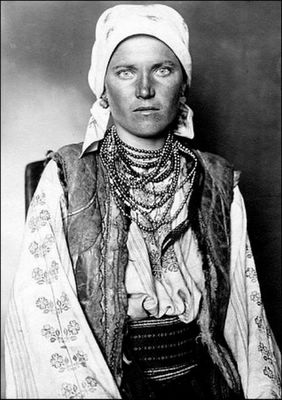
Courtesy of the Statue of Liberty National Monument, the Ellis Island Immigration Museum and the Aperture Foundation
When Old and New World Met in a Camera Flash
By KATHRYN SHATTUCK
If Peter Mesenh�ller expected to find the misery of the tired, the poor, the wretched emanating from a few photographs displayed in the Ellis Island Immigration Museum the day he first visited in 1996, he was in for a surprise. "I immediately got stunned by the dignity, the pride, the self-confidence," Mr. Mesenh�ller, a cultural anthropologist specializing in early still photography and immigration studies, said by phone from his home in Cologne, Germany. "It was totally different from the usual image we have of the huddled masses."
Mr. Mesenh�ller had alighted on the photography of Augustus Frederick Sherman, a registry clerk in Ellis Island's immigration division in the early 20th century. In the hours when he wasn't determining the fate of some of the thousands of immigrants disembarking daily in New York Harbor from foreign vessels, he was coaxing the hopeful to open their trunks, don their finest attire and level their gaze at his camera.
Some 75 photographs of these immigrants are on view at the Ellis Island museum in "Augustus Frederick Sherman: Ellis Island Portraits 1905-1920." Organized by Mr. Mesenh�ller and Diana Edkins, director of exhibitions and limited-edition prints for the Aperture Foundation, a nonprofit photography organization, the show coincides with the group's publication of a book of the same title with 40 more images. The show continues through Sept. 6 before traveling to 16 sites in the United States and abroad.
Understanding Mr. Mesenh�ller's fascination - obsession, really - requires no great stretch of the imagination. As they hover disconcertingly between art and artifact, Sherman's portraits are powerful in their directness yet almost antiseptic in their disaffection.
Dressed gallantly in their native costumes, solemn families and individuals announce themselves to their new world with no apologies. A Romanian shepherd sits with hand on hip, his decoratively embroidered sheepskin coat opened to reveal a lush pelt of curly wool. A Ruthenian, from Ukraine, stares out with pale eyes, her neck encircled by loops of iridescent beads above a peasant blouse and shearling vest. Two men from Borana, in Ethiopia, with sculptural hair ornaments sticking straight up from their heads display their shields; the woman between them hides her hair beneath a wrap.
Striking though they are, the portraits are only nominally personal, annotated occasionally by simple captions but mostly left unexplained: "Eleazar Kaminetzko - 26 - Russian Hebrew SS Hamburg June 23 - 1914. Vegetarian," Sherman wrote on the photograph of a young man with enormous eyes and long, glossy curls. Only a few details, like "Col. Helen R. Bastedo + Osman Lewis, 13, Belgian Stowaway," make up the 1921 caption for a boy with floppy hair and Sunday suit, his arm around the waist of an unrelated woman who protectively cups his hand. And then, with fedora, spectacles and pale smudge of mustache, there is Mary Johnson, 50, from Canada, who, Sherman wrote, "came as 'Frank Woodhull' " on Oct. 4, 1908, and "dressed 15 yrs in men's clothes."
Information on Sherman is nearly as scant. He was born on July 9, 1865, in Lynn, Pa., Mr. Mesenh�ller said, and was a member of the Episcopal Church; he was hired by the executive division of the Bureau of Immigration at Ellis Island in 1892, eight years after moving to New York, and moved up through the ranks.
"We've been looking for personnel files throughout the United States with all the official records and didn't find anything," Mr. Mesenh�ller said. "Up to now, Sherman is a question mark in a way."
Mr. Mesenh�ller speculates that as a higher-level officer, Sherman had unfettered access to the island's detention area, where immigrants were held for a day, a week or a few months after routine questioning raised doubts about whether they should be allowed in the country.
"The technical procedures in those days were very difficult," he said. "You had these huge tripod cameras and the exposure took how many seconds, and you had to get the lighting just right and have your subjects sit perfectly still. And with an average of about 5,000 people each day coming through Ellis Island at peak times, it must have been quite an undertaking."
In an essay in the book, Mr. Mesenh�ller writes that historians view these images as "one of the most substantial photographic records of that period of mass immigration."
Capturing his subjects against mostly plain backgrounds in the native finery they would soon discard for American clothing, Sherman simultaneously documented the richness of their heritage while labeling them specimens for anthropologic scrutiny. "Sherman considered these people as ethnic types, being representative of the new American species," said Mr. Mesenh�ller, who called on a broad swath of colleagues to help him identify the origins of various costumes and discern the differences in, say, the headdresses of Protestant and Catholic women from the Netherlands.
In addition to Sherman's Dutch, Italian, Romanian, Moroccan and Finnish prototypes, there are also the "oddities" - the giants and dwarves, the microcephalics, the physically deformed - he cataloged in later years.
Still, the Aperture Foundation's Ms. Edkins said, the photographer "didn't impose his own feeling on these people. He really showed it in a very stripped-down documentarylike way."
Such images may hold particular interest today "because immigration is so much in our mind," she said. "You know, we shed those things, those differences. We're all jeans and Gap and now there's a commonality."
Roy Glerum of Totowa, N.J., the son of one of those Ellis Island immigrants, said the reality of the melting pot hit him at the exhibition's opening in June. There he saw his father's 12-year-old eyes peering out at him from Sherman's 1907 portrait of his Dutch grandparents and their 11 children. Pinned to their chests was the number of the ship that would take them back to the Netherlands if they failed to pass inspection.
Mr. Glerum's grandfather, Dingenis, had sold his lobster boat to finance the family's journey. Growing up in New Jersey, Mr. Glerum's father, Fran�ois, soon known as Frank, took odd jobs running a bakery wagon before apprenticing as a shop boy at the Manhattan Rubber Company and working his way into an electrician's position, from which he retired 50 years later.
"My dad talked very, very little about earlier life," Mr. Glerum, 78, said. "He didn't want us to speak Dutch. He felt that being in America was the greatest thing and that we never needed to learn about the rest."
His recent museum visit was his first to Ellis Island, Mr. Glerum said. "I was really overwhelmed," he added. "Not knowing the language, giving up everything to come over here - I just thought they must have had great courage."
Copyright 2005 The New York Times Company Home Privacy Policy Search Corrections XML Help Contact Us Work for Us Back to Top

Monday, July 18, 2005

News International, via wireimage.com
Shahara Islam was a 20-year-old bank cashier
July 17, 2005
Lost in Bombings, Diverse and Promising Lives
By SARAH LYALL
LONDON, July 16 - They were mostly in their 20's, 30's and 40's. They were mostly on their way to work. They were the daughter of an Anglican bishop, the son of a Nigerian oil executive, the immigrant mother of two teenagers. Some were Muslims.
The names of the dead - Shahara Islam, Anthony Fatayi-Williams, Jamie Gordon, Ganze Gonoral, and so many more - reflect the diversity of their origins and the indiscriminate nature of the bombs that struck London a week and a half ago.
The death toll from the July 7 bombings - on three subway trains and on a No. 30 double-decker bus - stands at 55, including the bombers. The authorities have officially identified 47 of the dead.
Identification of the victims has lagged in most cases behind their families' convictions that their loved ones are dead. Part of the problem is that British procedures are slow, and inquests must be held when deaths are unnatural or violent. The difficulties are compounded by the fact that many of the bodies were jumbled together and severely damaged in the explosions.
The Identification Commission, a group of doctors, police officers and forensic scientists convened in response to the bombings, is relying on a variety of methods, including dental records, fingerprints, DNA - and even internal medical devices like pacemakers with serial numbers - to complete its task.
For friends and relatives, the agony of uncertainty has seemed almost as bad as the devastation of knowing. Many families have been left in an awkward limbo, knowing in their hearts that their lost relatives are dead, but unable to mourn properly.
One such relative was Marie Fatayi-Williams, whose son, Anthony, was still officially missing last Monday, four days after the bombing. Mrs. Fatayi-Williams stood in Upper Woburn Place, near the site of the No. 30 bus explosion, that day and gave a speech about him, saying that she had been "destroyed" by his certain death. He had not been heard from since 9:41 a.m. on July 7, she said, when he telephoned his office to say that the subway had been evacuated and that he would find another way to get to work.
"How many mothers' hearts must be maimed?" Mrs. Fatayi-Williams asked, in an anguished speech that became a striking symbol of the families' grief.
Mr. Fatayi-Williams, 26, was in many ways an embodiment of modern, postcolonial London - a "world citizen," as his mother described him. Nigerian by heritage, he grew up in London and graduated from Bradford University. But he was deeply connected to his Nigerian roots and intended to work in Nigeria someday.
Mr. Fatayi-Williams, who lived in Hendon, was an engineering executive, loved rap music and had hopes of starting a record label. His mother is a Catholic, and an oil company executive; his father, a Muslim, is a doctor. "Basically his ultimate aim was to become a politician and sort out Nigeria," his cousin Sadie Williams told The Evening Standard.
Mr. Fatayi-Williams was her "first son, my only son," his mother said, and he had promised to take care of her in her old age. "In African society, we hold on to sons," she said.
But on Friday, her son was declared dead.
As the names have been released, in dribs and drabs, portraits have been emerging of the victims. Many were young and just starting out. Shahara Islam, for instance, was a 20-year-old bank cashier, a second-generation Bengali immigrant who moved easily between the strict religious world of her parents and the secular world of Britain. She died on the No. 30 bus, her body so mangled that she had to be identified through dental records.
Jamie Gordon, 30, a fellow passenger on the bus, spent his early years in Zimbabwe, worked in finance and was planning to marry his girlfriend of seven years, Yvonne Nash. Shyanuja Parathasangary, also 30, and originally from Sri Lanka, worked for the postal service and died on the bus, too.
Other victims, like Gladys Wundowa, 50, were more established in their lives. An immigrant from Ghana, Mrs. Wundowa had two teenage children. She worked the 5 a.m. to 9 a.m. shift as a cleaner at University College London, and on July 7 left her job, as usual, to go to a class in housing management in Shoreditch. Unable to take the subway, she took the No. 30 bus.
Michelle Otto, 46, was also an immigrant - from Romania - and died on the Piccadilly Line train. She had been en route from the house she shared with her sister's family in Mill Hill to her job as a dental technician in Knightsbridge.
James Adams, 32, liked to stay in touch. At 7:30 a.m. on July 7, he called his mother to tell her he was at King's Cross station headed for work. He also sent a text message to a friend, Amanda Garatty.
That was not unusual, said Tony Garatty, who is married to Amanda and who is one of a close-knit group of Mr. Adams's friends from Bretton Baptist Church in Peterborough, Cambridgeshire.
"He would text my wife all the time when he saw something on the telly," Mr. Garatty said in an interview. "What's really going to hit me is when football season starts, because if he saw anything about Manchester United he'd text me and say, 'What about this?' "
Mr. Adams, a mortgage consultant with a dry wit, had a wide range of friends: David Lammy, a member of Parliament who had known him since grade school; the Rev. John Boyers, the chaplain of the Manchester United soccer team, who met him after Mr. Adams sent a letter introducing himself; and Mr. Garatty, a 47-year-old father of two who was his partner in crime at rock concerts and soccer games.
Recently, the two men spent a Saturday together at the Live 8 concert for Africa in Hyde Park. Mr. Adams was late in picking up Mr. Garatty - he was known for that, too - but he more than made up for it by supplying not only binoculars but also two little folding stools in case they got tired.
They did not. Mr. Adams stood for the entire concert and was at his happiest when Annie Lennox appeared. "At one point he said, 'I hope she sings - ' and then she started to play the intro to the song, 'Sweet Dreams (Are Made of This),' " Mr. Garatty said.
"We were sort of saying, 'Wow, we're here and this is history,' " he said.
Mr. Adams, believed to have been on the bombed Piccadilly Line train, is still officially missing.
Ciaran Cassidy was an unusual combination, a hard-core Arsenal soccer fan who also seemed to be one of Earth's cheeriest shop assistants. Along Chancery Lane, where he worked in the Bridge & Co. stationery store, Mr. Cassidy, 22, was known as a young man who could chat about anything to anyone, who enthusiastically made copies of even the most tedious documents, and who invariably urged customers to partake of the free jelly beans in the jar on the counter.
So the news of his death affected the little neighborhood along the road in London's legal district, where Mr. Cassidy had become, in however fleeting a way, part of the fabric of daily life. His boss, Mike Harris, set up a book of condolence, and dozens of people stopped by to sign it and to reminisce about Mr. Cassidy.
Mr. Cassidy, the son of an Irish postal worker and a teacher's assistant who grew up in London, had been saving for his dream trip: a year's working holiday in Australia. He spent the night before he died discussing his plans with his sister, Lisa.
"People used to say that you could never walk down the road with him because he knew so may people and would forever be stopping to talk to them," Lisa told The Standard. That certainly seemed to be the case on Chancery Lane.
"I remember him from when he started," Angela Thomson, who works in a travel agency nearby and who stopped in to sign the condolence book, said in an interview. "Such a lovely boy. He was one of life's sweet souls - he really wanted to be helpful."
"Ciaran - it's Rita here!" went one of the entries in the book, from a regular customer. "I will always come in and think of you. Will miss you."
Mr. Cassidy's body was found in the wreckage of the bombed Piccadilly Line train. His death became official on Tuesday.
Giles Hart, 55, was from Hornchurch, had a large family - three children, a wife, an 85-year-old mother who lived with them, a sister - and worked as an engineer for British Telecom in Islington. But there was much more to him. A former chairman of the Polish Solidarity Campaign of Great Britain, Mr. Hart met his future wife, Danuta Gorzynska, who had fled Poland when martial law was imposed there, in London more than 20 years ago.
He also loved books, particularly those of Lewis Carroll - he was a big fan of "Alice's Adventures in Wonderland" - and of H. G. Wells. He was chairman of the local branch of the H. G. Wells Society. On July 7, he was due to give a speech titled "The Lesser-Known Works of Lewis Carroll."
He was a humanist - one of his many other voluntary posts was as vice chairman of the local branch of the British Humanist Association - a campaigner for peace, a member of the Anti-Slavery Society, a fighter against bigotry and human rights abuses. "It is tragic that he fell victim to the very evil against which he had struggled," the family said in a statement.
Like many of the families, Mr. Hart's asked not to be contacted by the news media. "We hope his many friends and colleagues will continue with his campaigns for freedom and justice, to make the world a fairer and greener place to live in," the family said. "May he rest in peace and his ideals eventually triumph."
Mr. Hart usually took the Northern Line to work. But because of the subway closures, he got on the No. 30 bus. He was declared dead on Friday.
Copyright 2005 The New York Times Company Home Privacy Policy Search Corrections XML Help Contact Us Work for Us Back to Top

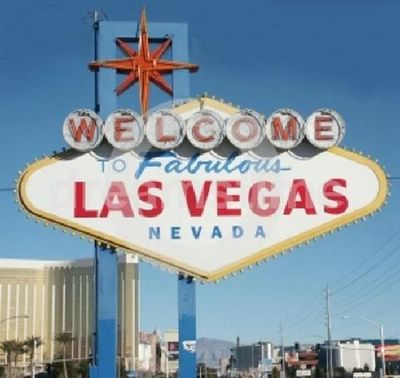
Saturday will be the 5th (Sunday will be the 6th) straight day with a high of at least 110. Back in July, 1961 we had 10 consecutive 110 degree days... and that's the record. The slight bump in humidity Friday will dry out over the weekend. Here are the numbers (I hope you're still sitting down): 114 Saturday, with some neighborhoods near 120. 113 Sunday and some neighborhoods will be near 118. Lows in the upper 80's. But have a good weekend anyway,

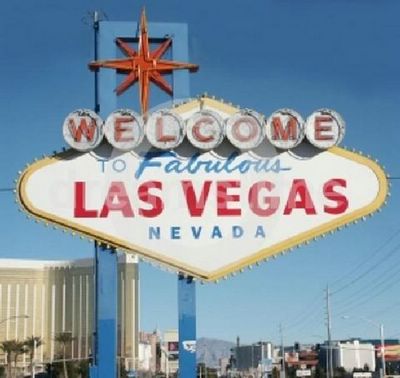
Saturday will be the 5th (Sunday will be the 6th) straight day with a high of at least 110. Back in July, 1961 we had 10 consecutive 110 degree days... and that's the record. The slight bump in humidity Friday will dry out over the weekend. Here are the numbers (I hope you're still sitting down): 114 Saturday, with some neighborhoods near 120. 113 Sunday and some neighborhoods will be near 118. Lows in the upper 80's. But have a good weekend anyway,

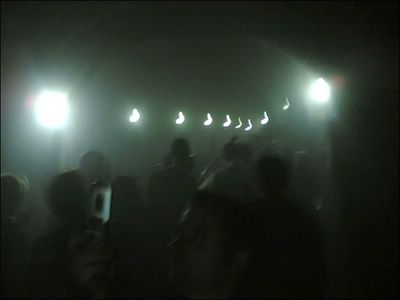
Alexander Chadwick/Associated Press
July 17, 2005
Battlefields
By RICHARD A. CLARKE
The carnage in the London Underground follows an even more horrendous attack on Madrid commuters 16 months ago. When President Bush sought recently to reassure Americans about his Iraq policy, he emphasized that we are fighting terrorists in Iraq so that we do not have to fight them here at home. Unfortunately for Britain and Spain, fighting terrorists in Iraq did not immunize them from attacks at home.
Earlier this year the administration revealed that Osama bin Laden had communicated with Abu Musab al-Zarqawi, the head of ''Al Qaeda in Mesopotamia,'' urging him to send some of his many fighters to the homelands of the United States and its coalition allies. Zarqawi's network has apparently been quite successful in recruiting new terrorists in Arab nations and in Islamic communities in Europe. Before the London attacks, the police arrested Zarqawi recruiters in Britain, Germany, Spain and elsewhere. (Among those arrested in Spain was a terrorist thought to be connected to the Madrid attacks.) Iraq acts both as a motivator for the new jihadis and as a training ground. It has replaced Afghanistan, Chechnya and Bosnia. Now, Muslim radical youth go to Iraq to prove themselves and learn the trade of terror.
A recent C.I.A. analysis reportedly concluded that those being recruited by Zarqawi are receiving better training and preparation by fighting in Iraq than previous terrorists received from bin Laden in Afghanistan. The report went on to say that these new terrorists will probably leave Iraq and practice their skills elsewhere. A Canadian Intelligence Security Service analysis reportedly says that terrorists trained in Iraq are likely to be involved in attacks in other countries. Commenting on the report, a former Canadian security officer said that terrorists are ''still planning very imaginative actions like we saw on 9/11.''
Although the United States made legal entry into the country more difficult after 9/11, it is still possible for potential terrorists to come here. Many of the new jihadis are citizens of European nations to which we grant visa-free entry. A jihadi might also come illegally, as millions of people do each year. Thus many security experts believe that it is only a matter of time until another attack occurs in the United States.
Members of the 9/11 Commission recently warned that the absence of an attack here in the last four years has created an atmosphere of complacency in which needed security improvements are given inadequate attention. Their warning should be heeded. The London Underground bombings highlighted, for example, one of the many areas where we remain vulnerable. Although the federal government has spent approximately $18 billion since 9/11 upgrading airline security, it has spent only $250 million on passenger-rail security. Any regular traveler can see the results. While I have been unable to carry a small scissors onto an aircraft, I have successfully carried a gun onto a passenger train.
In the hours after the London attacks, police officers flooded subway systems in the United States to beef up security. The fact that they had to do so is further evidence that these systems lack adequate protection. Increased use of closed-circuit cameras, uniformed guards and undercover officers in stations and on trains would reduce the likelihood of a successful attack on commuter rail lines.
The best way, however, to stop such attacks is through intelligence penetrations of terrorist circles. Only last month, almost four years after 9/11, did the administration agree to create a National Security Service within the F.B.I. to enhance our ability to perform such penetrations. It will be more years before this service is fully operational.
Why do we still find ourselves with so many domestic vulnerabilities? One major reason is that we have not spent what is necessary. When the Department of Homeland Security was created, the White House said it should be ''revenue neutral,'' i.e., no new money. Since then, homeland security spending has grown very slowly. The amount budgeted has not been based on needs assessment but on arbitrary decisions in an overall fiscal environment made difficult by skyrocketing spending in Iraq. Unfortunately, spending in Iraq will not immunize America from terrorist attacks at home any more than it did Spain or Britain.
Copyright 2005 The New York Times Company Home Privacy Policy Search Corrections XML Help Contact Us Work for Us Back to Top

Friday, July 15, 2005

Mr. Berinie Ecclestone. British Grand Prix, 2005.
All in all, this season has been gratifying since Fernando Alonso has been so incredibly quick and consistent. For his youth, he seems a very mature driver, and he appears to have the balance of his emotions and ego placed in proper perspective. In short, the guy is super talented and very cool. This is the best thing that could happen to Formula 1.
As far as Indianapolis is concerned, I believe there were unseen forces that may be quite pleased to see Formula 1 fall flat on its face here in America. Of course, when viewed from a strictly fan perspective, the entire episode was one giant farcical disappointment.
Several matters come to mind. Michelin, the internationally known and recognized tire company somehow did not do the necessary research and showed up in America without a tire that was capable of performing on the Indy track surface. Granted, Bridgestone had been at the 500, so they naturally would have had more data on the track surface and so were well advised in what compounds they had chosen prior to arriving at the Brickyard. It is astounding however, when you analyze the sequence of events. That first and foremost, a tire company participating in Motor racing at the highest level of international competition with billions of dollars involved throughout the entire enterprise, would be capable of going in blindly without having at least examined what options they might need to have or what kind of obstacles they might be expected to incur. It was not a secret that the race track had been resurfaced in some way or another which resulted in a grittier more abrasive characteristic.
Michelin shows up and discovers that the tires they have are relatively useless and worse yet they are dangerous. Ralf Schumacher goes off in a high speed shunt, and one other driver whose name escapes me now, goes out as well, and all the while Michel in have no clue. Except they do realize and admit that the safety of the drivers precludes them from simply pressing forward and acting as if everything would be alright. For this I give them a certain degree of respect.
So when the windup ensues you have the race itself, and all that it represents in terms of the perennial desire for Formula 1 to someday, somehow establish itself firmly and loyally in the minds and hearts of American racing fans.
And then you have the internecine intrigue between the intricately drawn factions of the International Grand Prix circus. Here we enter into cultural, financial, philosophical, and not the least, personal conflicts and long standing animosities.
From the Bridgestone perspective, why would they have wished to smooth over a gaffe that exposed their world's greatest rival as something of a complete incompetent?
From the FISA point of view, I suppose they felt they would open a Pandora's box of possibilities wherein which rules that are so incredibly complex, must be continuously revised and reformatted to account for so many variables within the sport and the technology that it draws from in large measure. These rules would perhaps then be the constant point of negotiation as other points of departure would come into question.
Finally, Scuderia Ferrari was showing as much compassion as the Italian Expeditionary Tank forces extended to Hailee Sallase and his vastly out numbered, camel bourne , sling shot bearing defense force in Ethiopia. Another less than memorable episode in 20th century Italian history.
FISA was in no way potent enough by way of silent persuasion to effectuate an ultimate compromise. Max Mosley would have been wise, in my opinion, to have made his way to the paddock and the negotiating table, because the entire BRAND of Formula 1 was suffer ring a devastating blow to its credibility, marketability, and general point of popular acceptance.
As it turns out, he remained somewhere in Europe, Paris I suppose, and from that distance felt safe enough while allowing Ecclestone to bear all of the justifiable ire and resentment from those fans who made their weekend around seeing a genuinely competitive International Grand Prix. They deserve, and I believe they eventually will receive, their money for admission refunded.
Furthermore, Mr. Ecclestone is one person who would have, if he were able, in and of his own will, put together a compromise solution so as to have the racing fans enjoy what they had come to see. There is no one that I know, in or out of Formula 1 who is more desirous of establishing a permanent presence and appreciation for Grand Prix racing in the U.S. than Bernie Ecclestone. He has made repeated attempts to educate, if you will, the civic leaders here in Las Vegas about the kind of product that Formula 1 confirms as unique and attended by a very high end marketing segment with disposable income far greater than what is demographically described by the NASCAR and other forms of all American motor racing.
The unfairness in regards to Ecclestone and the vents at the recent American Grand Prix, is that there are limits to what he personally can do without risking the opposite side of the critics corner wherein which he is accused of wielding totalitarian and dictatorial control over every aspect of the entire enterprise.
To my way of thinking, to the extent that in every instance where to a greater or lesser degree, "The Ecclestone as Czar model" is accurate, then the entire Formula 1 world and everyone involved in this endeavor in any way large or small, should be thankful for all of the years of incessant determination and unrelenting focus and vision with which Bernie Ecclestone has dedicated himself towards bringing together the very essence of what is accepted as the world�s premier Motor Racing series.
Most knowledgeable people with even the slightest awareness of Motor racing in general, will acknowledge that Grand Prix Formula 1 exists on a level of technical and physical challenge unlike any other form of entertainment in the world today. The very fact that Ecclestone has traveled from year to year from race to race, from airport to hotel to airplane to helicopter to jet to hotel and back around again is testimony to the superior discipline, motivation, intellect and abounding business genius that mark the achievements of this leader of the world of Grand Prix Motor Sport.
His comment about the women being advised to wear dresses the color of kitchen appliances was simply his "East End" London sense of humor flexing itself as a leit motif to a very stressful situation.
I know from first hand, personal experience that Bernie Ecclestone is a genuine humanitarian and extraordinarily generous to those he loves and cares about. He is unsparingly loyal to those loyal to him, and he is a person who has done innumerable acts of great kindness to help those less fortunate through times of overwhelming adversity.
His financial success should not be held against him, because every pound note Bernie may hold he well deserves because he has worked his butt off and taken many risks, suffered many personal setbacks and disappointments integral to the dangers of Formula 1 and survived it all to stand as the single most influential leader in the world of Motor Sport since the beginning of organized and sanctioned competition.
No one that I can identify comes even close to having been able to accomplish so much from every angle to see that so many people realized so much more as drivers, team owners, promoters, journalists, photographers, and accessory entrepreneurs of every ancillary stripe.
All persons related to this unique form of incredible excitement and test of competitive skill and technical expertise owe an eternal debt of gratitude to Mr. Ecclestone, and those persons who have character and real integrity within the sport itself realize this only too well.
Without him, Grand Prix Motor Racing as we know it today, would not exist. Case Closed
Michael P. Whelan Las Vegas, July 12, 2005.

Friday, July 08, 2005

Write Line
FIA and Michelin Teams: A Letter of Concern
2005-06-24
Kaylie Broughton
The FIA have recently published their views on the USA Grand Prix and in general showed that they care little for their fans and that it is not important to please them, but let me take this opportunity to remind everyone of something. Without us, there are no viewing figures and money spent on race weekends, without that there are no sponsors willing to come into F1, with no sponsors there are no F1 teams, with no teams there is no F1. Perhaps you should sit down for awhile and look at it from someone else's perspective instead of just trying to cover your own portion of blame in the matter. Maybe you should try running a series without fans, go to races with no one watching in the stands or on the tv and see how far you get before you fail.
The events which I witnessed unfolding in the USA Grand Prix were totally disgusting for a global sport such as F1, but post race dealings have gone from disgusting to unacceptable and this is why you find me writing this letter.
I am in complete support of the Michelin teams who withdrew from the USA Grand Prix on the formation lap (note that they did start the race) and find it shocking that you blame the matter totally on these teams and come up with reasons which contradict your own rules. I am right in believing there is a rule which states at least 12 drivers should take part in a race otherwise it can be cancelled, so if you deem that the Michelin teams did not start then you should have also stuck to this rule.
I believe that Michelin are to fault for providing tyres that were unsafe for the grand prix in which they should have been used for, but instead of dragging the sport further through the mud perhaps you should be concentrating on how to ensure or decrease the chance of this happening again.
Michelin teams pulled out on grounds of safety and there are several team bosses out there that know all to well about fatalities and injuries that are possible in F1. Even the solutions that were offered did not guarantee anymore safety than just racing at full speeds, as the root cause of these problems had not been identified.
As one of the younger fans of the sport I know how unpopular the sport has become in recent years, but I have stuck through the less interesting seasons and intend to celebrate my 10th year of watching the sport by attending the Silverstone grand prix, however the last week has made me question the sport and indeed my support for it and if the teams are punished for their correct actions last weekend then come race weekends you can forget any viewing figures come from me.
I hope the hearing on the 29th June clears the Michelin teams of any part of bringing the sport into disrepute and I would like to emphasise that they have my full support on this matter.
Regards,
Kaylie Broughton

